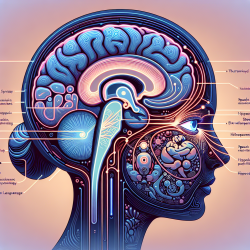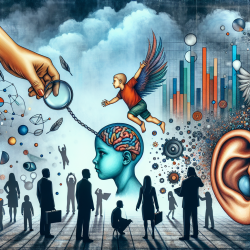The COVID-19 pandemic has necessitated rapid adaptations in many fields, including neurologic music therapy (NMT). The study "Neurologic Music Therapy via Telehealth: A Survey of Clinician Experiences, Trends, and Recommendations During the COVID-19 Pandemic" provides valuable insights into how NMT practitioners have transitioned from in-person to telehealth services and offers data-driven recommendations for enhancing telehealth practice.
Key Findings
Based on a survey of 69 NMT clinicians, the study revealed several important trends:
- Frequency of NMT Techniques: Clinicians who used NMT techniques more frequently retained more clinical hours and perceived a higher likelihood of continuing telehealth post-pandemic.
- Transferability of Techniques: All NMT domains (sensorimotor, cognitive, speech/language) transferred to telehealth, although sensorimotor techniques like rhythmic auditory stimulation (RAS) were less frequently used due to safety concerns.
- Employment Settings: Clinical hours decreased for telehealth compared to in-person sessions across all employment settings, highlighting the universal impact of the pandemic on therapy delivery.
Recommendations for Practitioners
Based on the study’s findings, the following recommendations can help practitioners improve their telehealth NMT services:
- Integrate Telehealth into Routine Care: Evaluate on a case-by-case basis whether clients would benefit more from in-person NMT, telehealth, or a combination. Consider factors such as client location, preference, and caregiver availability.
- Mitigate Safety Concerns: For sensorimotor techniques like RAS, ensure the presence of a caregiver or use physical support devices. Have emergency contacts available and include telehealth-specific consent forms.
- Identify Beneficial Populations: Stay updated on research about telehealth benefits for specific populations and translate these findings into practice. The NMT Academy should maintain a bibliography of telehealth-related research for clinicians.
- Involve Caregivers: Educate caregivers on how to support clients during telehealth sessions and provide resources for practicing skills at home.
- Develop and Share Resources: Create and share assessments and techniques that can be effectively administered online. Utilize the NMT support network for resource distribution.
Benefits and Challenges of Telehealth
The study identified several benefits and challenges of telehealth NMT:
- Benefits: Continuation of therapy sessions, increased accessibility for remote clients, and enhanced caregiver involvement.
- Challenges: Technical difficulties such as internet connectivity and audio/visual latency, difficulty providing physical cues, and the need for caregiver support.
Conclusion
Telehealth offers a viable platform for delivering NMT services, with significant benefits in terms of accessibility and caregiver involvement. However, it also presents challenges that need to be addressed through strategic planning and resource sharing. By following the recommendations outlined in this study, practitioners can enhance their telehealth services and continue to provide effective therapy to their clients.
To read the original research paper, please follow this link: Neurologic Music Therapy via Telehealth: A Survey of Clinician Experiences, Trends, and Recommendations During the COVID-19 Pandemic.










